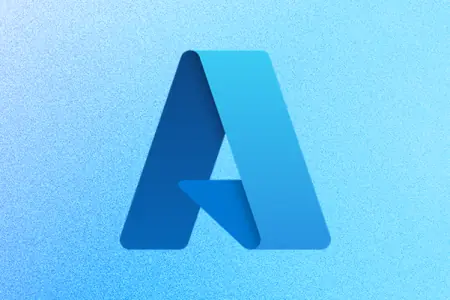
DR 101: Top Questions To Consider When Picking a DRaaS Provider
By Harry Smith, Technology Evangelist at Zerto
DRaaS – Disaster Recovery as a Service – is a pretty well-known term in the industry now, but do you know how to get started leveraging it? Let’s discuss some of the common questions in regards to DRaaS, as well the differences between managed and public cloud options. We’ll show you why using Zerto with your DRaaS offering makes life easier. Once you learn more, you’ll wonder why other options are considered acceptable.
Introduction – What is DRaaS?
To level-set, DRaaS is a term that refers to a provider offering a site and typically managed services around a disaster recovery offering. Managed services in this capacity include not only the procedures of onboarding your organization, but also the ongoing maintenance of the hardware and software, network connections and services, security and isolation, and also the execution of the DR process should the need arise (including failing over your workloads to the DR site, and ensuring all the related services and connectivity to your DR workloads are fully up and running and accessible). Actually there is a DRaaS spectrum to choose from, based on the type of service being delivered.
Why can’t I just put my workloads into the cloud? Some organizations make a shift by moving workloads from on-premise to the cloud. A very important distinction is that even your workloads are now in the cloud, that doesn’t mean they are protected with a DR service or solution. Yes, you can have both on-premise to cloud DRaaS, and many providers also offer DRaaS between their sites for your hosted workloads.
Here are some basic questions you should be asking:
- What is my SLA (Service Level Agreement), including RPO (Recovery Point Objective) and RTO (Recovery Time Objective)? Do I have a choice between site locations within my SLA? Does the provider have references to check on the track record of maintaining SLAs?
- What replication technology is being used and what impact does it have on my production environment, recovery points, and recovery types?
- If I’m locked into software and hardware vendors and versions, how do I plan to stay in lock-step with the provider should one of us want or need to upgrade?
- Can I test my DR solution? Will testing have any impact on the production workloads? Will DR testing pause or break replication, often bringing disaster and compliance worries?
- Can I recover individual virtual machines, multiple virtual machines as an application, and/or an entire site, depending on my needs?
- Can I have automated reverse replication and failback upon successfully restoring production resources?
- Can I get acceptable support any time (community forum only; email only; phone)? What types of support are offered and what time(s) should I be aware of if I have a disaster during “off hours?”
The Zerto Offering – Why should I accept anything less?
I do want to call out some key functionality that a Zerto-backed public or managed cloud provider can bring. Some of these are particular to managed providers, but I’ll try to point those out below.
- Zerto’s Virtual Replication allows for continuous, block-level replication without scheduling, without agents, and without snapshots (virtual machine or storage based).
- This means an RPO of seconds and RTO of minutes.
- DR testing any time, without impact. ZVR allows you to spin up recovery virtual machines (or the entire site) on the DR site, without impacting the protected virtual machines, and without pausing or breaking replication. Stay in compliance during testing and after, with a full report created automatically.
- Application Consistency. Virtual Machines can be grouped together as a consistency group to ensure they can be recovered from the same point-in-time. No more guesswork.
- Cross-hypervisor and hardware and storage platforms. With Zerto, you can replicate across hypervisors and across hardware and storage platforms.
- Automated reverse replication and failback. When using a managed cloud provider backed by ZVR, you can have the option of automating failback from the cloud provider once your production site issues have been rectified and is back online.
- Licensing: ZVR is offered in a few different ways, but in this context you typically have a choice between:
- Perpetual licenses, which you own and protect some virtual machines to private clouds, some to managed clouds, and others to public clouds, if you wish.
- Recurring licensing, meaning you pay the provider a monthly fee that is charged based on how many virtual machines you are protecting each month.
Summary
Zerto has over 300 partner cloud providers with DRaaS solutions backed by Zerto’s Virtual Replication, and also support within AWS.
- What am I getting for my money in terms of resources, support, and availability?
- How easily and quickly can I recover and how much data should I expect to lose (versus what is truly acceptable from the business)?
- What is my flexibility in DR testing, site mobility, and platform mobility?
- What impact with the solution have on my production workloads?
- Can I get back out of the DR site once I need to failback, and what is that procedure?
- Does the provider offer DRaaS between their sites, should I decide to run my production workload in their site instead of on-premise?
- Is selecting a public cloud offering suitable for my business, as long as I know how to handle all the requests above that a managed provider would normally handle for me?
Become even more knowledgeable with our Disaster Recovery Essential Guide!
About the Author
Harry Smith is a Technology Evangelist at Zerto with a focus on helping customers understand and adopt the Enterprise Class scalability to organizations of all sizes and sectors, and even across clouds, hypervisors, and platforms. Prior to Zerto, Harry began his career in desktop and server support, worked for VMware in Technical Marketing and the Professional Services Organization for more than 8 years. His technical marketing focus was with vRealize and vCloud Suites creating solutions through product integration aligned with business goals. Harry’s main focus in PSO was architecting vCloud Director (and Lab Manager) private clouds, especially SDLC (Test/Dev) in the cloud.
Follow Harry on Twitter @HarrySiii


